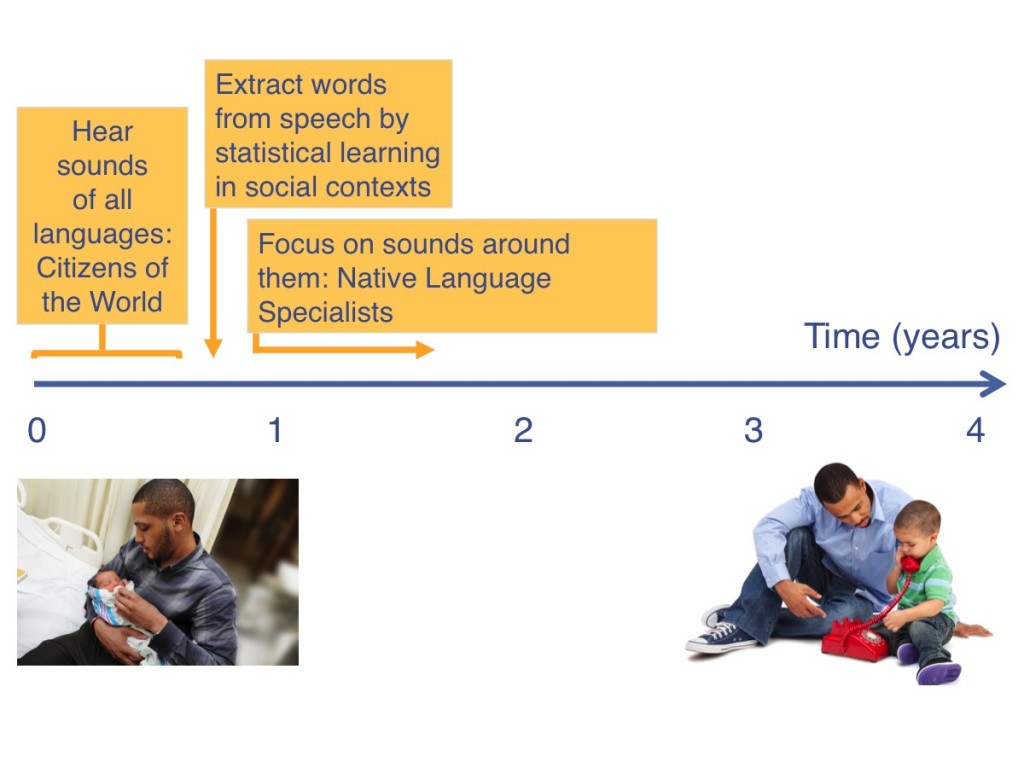
This module focused on speech perception, or how infants learn the sounds of language. You also saw evidence that speech perception and speech production are tightly linked. Indeed, research shows that the early speech perception skills predict later language development. For example, infants who are better at detecting the differences between vowel sounds of their native language at 6 months speak and understand more words at two years of age. Similarly, infants who are better at hearing the differences between syllables of their native language at 7.5 months of age say more words and longer sentences between 1 and 2.5 years of age. Brain researchers have found a tight relationship between the different building blocks of communication. For example, children whose brains have stronger electrical responses to native language sounds in the first year of life tend to speak more, and use more complex language in the second and third year of life.
These are only a few examples of the cascading effects of language learning. Listening to speech in the first year of life allows infants to produce the same sounds, and then transition to words and sentences. Those infants who are more effective “listeners” in the first year of life are better prepared for producing words and sentences later on. Finally, learning to read and write is the result of these basic blocks of communication. The roots of communication and literacy begin by listening to the sounds of language in the first year of life.
-
- Categorization
- grouping together the same sounds, and distinguishing them from other sounds
- Phoneme
- the smallest unit of speech (a sound)
- Sensitive period
- a time in development when the brain is especially ready to learn a skill
- Speech perception
- listening to speech
- Speech production
- speaking
- Statistical learning
- computing how likely it is that certain events (in this case sounds or syllables) occur compared to others